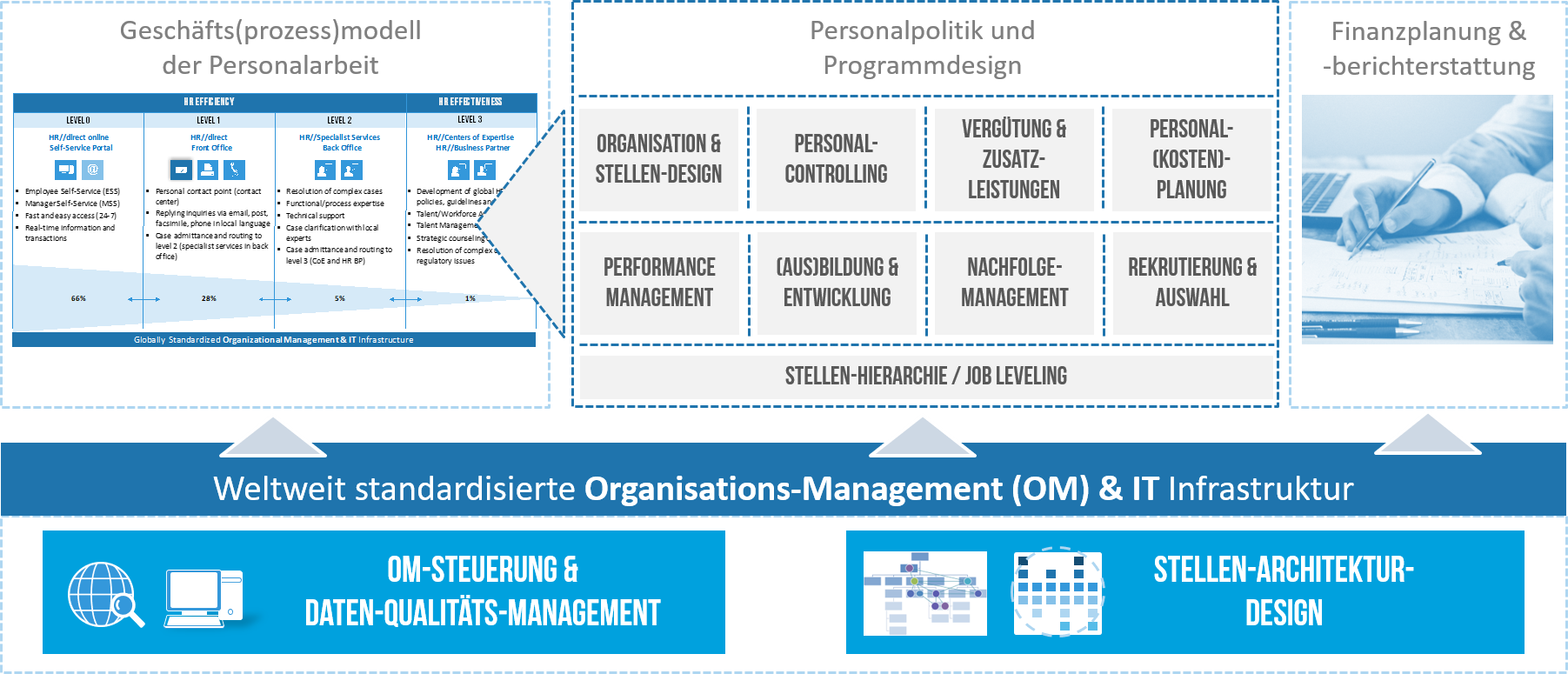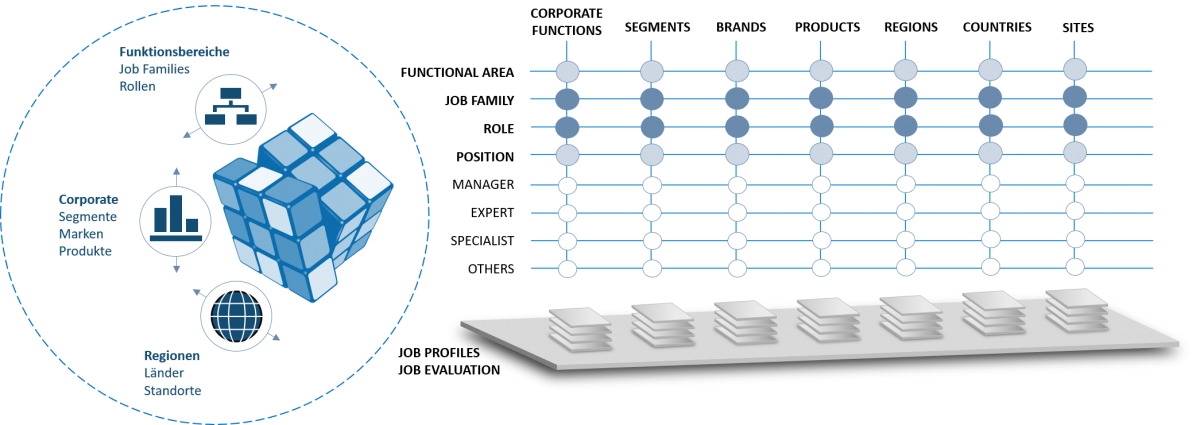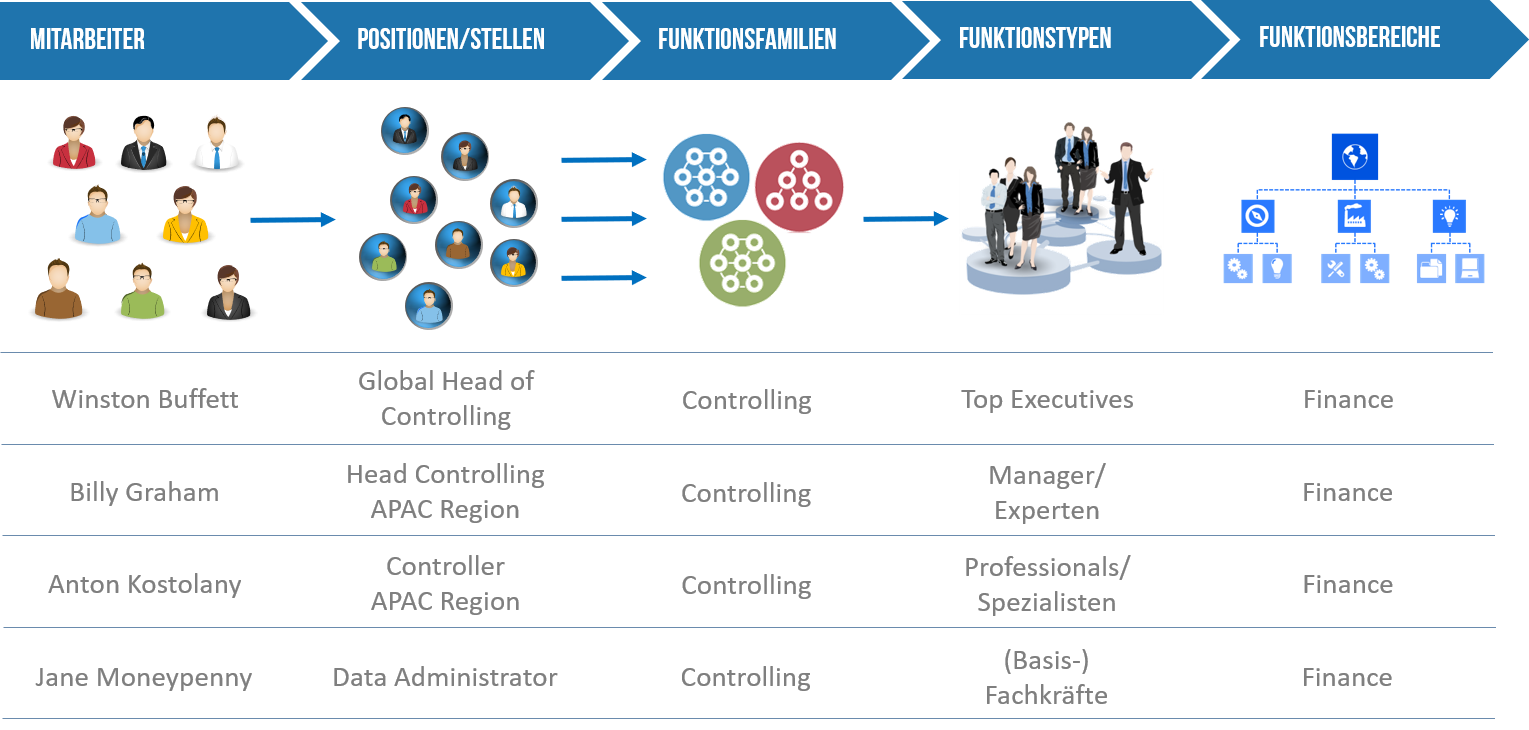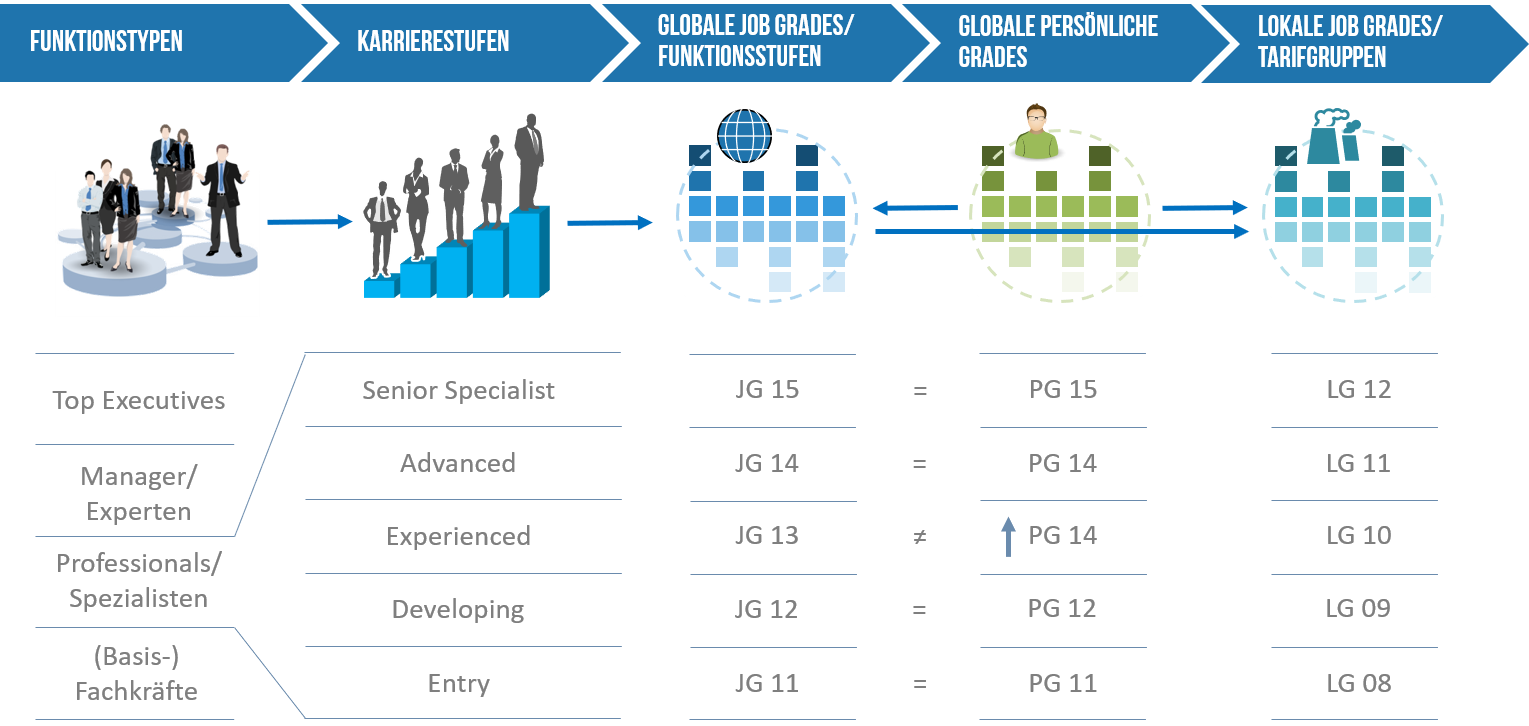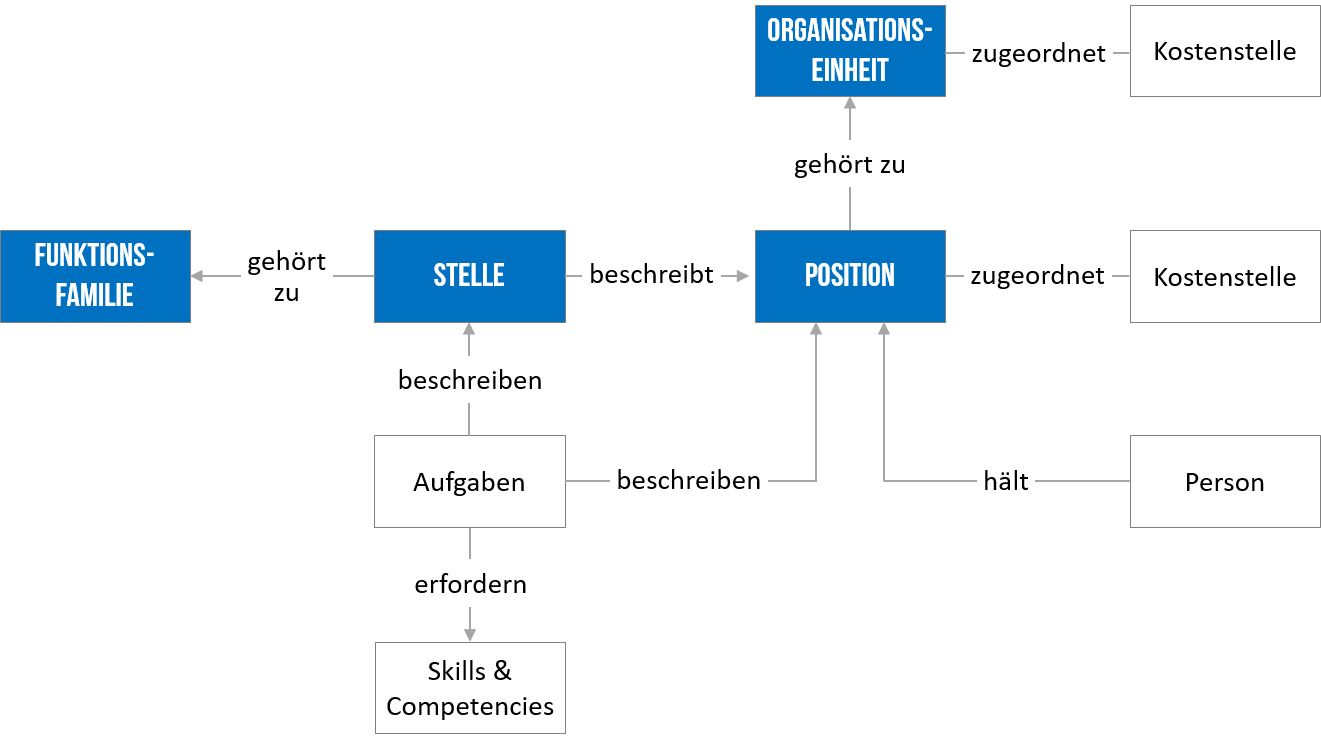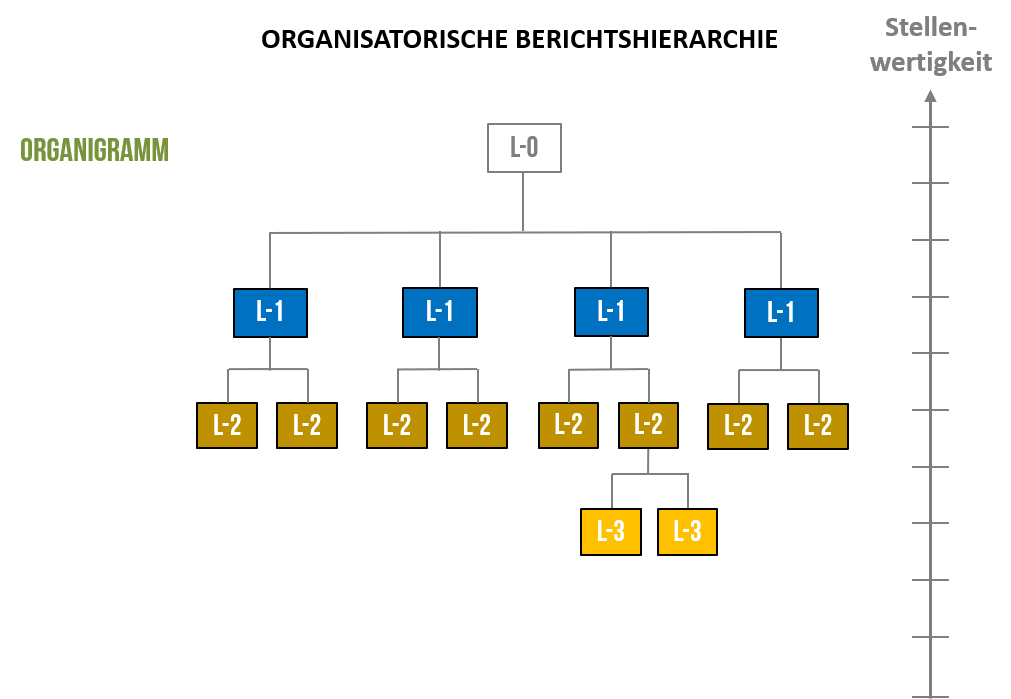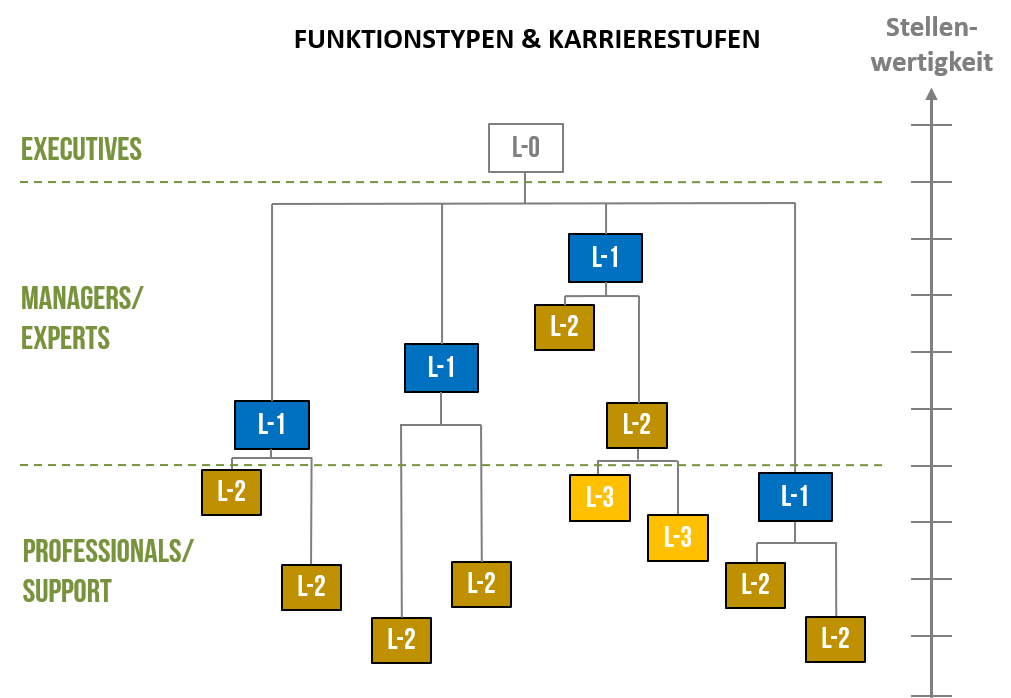Die organisatorischen Herausforderungen des globalen Wachstums meistern.
Das globale Wachstum, sich verändernde Geschäftsmodelle und neue Arbeitsformen stellen das globale Organisationsmanagement (OM) vor völlig neue Herausforderungen. CHANGELEADERS unterstützt sowohl bei Aufbau und Optimierung der globalen Organisations-Management-Funktion als auch bei der Überprüfung und (Neu-)Gestaltung von Job Architekturen, Gradingstrukturen und Karrieremodellen.
Effective global Organizational Management (OM) is more than the creation, change and delimitation of organization units and positions in the OM data core. It is the basis for the strategic and operational alignment of business strategy, organization development and workforce planning.
- Größe/Reife & Performance
- Regionen/Länder & Kulturen
- Business Lines
- Funktions-/Fachbereiche
- Funktionsfamilien
- Einfluss auf Orga und Ergebnisse
- Führungskulturen
- Führungsspannen
- Mitarbeitergruppen
- Tarifverträge
(Arbeitsbedingungen, Entgelt, …) - Arbeitsrecht
- Steuerrecht
- …
- Führung mit disziplinarischer Verantwortung
- Neues Verständnis von Führung und Zusammenarbeit
- Projektverantwortung
- Fachliche Themenverantwortung in Netzwerken (Kompetenzcenter)
- Führungsrollen
- Managementebenen
- Experten-/Spezialistenrollen
- Weitere Mitarbeiterebenen
- Reife der HR-Organisation
- Talent & Performance Management
- Gesamtvergütungsmanagement
Verwandte Informationen auf dieser Webseite:
Job Architecture & Skill Management in Agile Organizations (Whitepaper EN)
Job Grading und Skill Management in agilen Organisationen (Whitepaper DE)
Optimale Führungsspannen (Whitepaper DE)
sowie für die effiziente und effektive Personalarbeit.
The critical importance of OM with its interdependencies is widely appreciated.
However, global OM processes and data quality is an issue everywhere.
There is no clear proof for a single best practice, but there are some trends and smart practices that may help to describe and shape the future of organizational management:
- general trend towards evidence-based people management
- organizational management is increasingly seen as a holistic function (governance, consulting and data management)
- organizational data will become an even more critical resource in predictive talent & workforce analytics
- globally standardized HR processes will be supported by integrated IT solutions
In general, these developments require the further
- alignment and integration of processes
- standardization and harmonization of processes
- automation of processes based on a globally unified IT platform
From an OM perspective, these developments require
- some fundamental improvements based on the review and redesign of strategic organizational, HR and IT concepts
- some redesign of OM-related workflows, structures and roles
- a variety of systems-related improvement measures, such as automated links and plausibility checks
- the subsequent alignment of policies, guidelines and training measures
eines Konzeptes zur Steuerung des globalen Organisations-Management (OM).
SKILLS REQUIREMENTS
CHANGELEADERS bietet interdisziplinäre OM-Skills:
- Globale Linien- & Beratungserfahrung
- Globale Strukturorganisation
- Globale Job Architekturen
- New Work Design & agile Strukturen
- Globale Stellenbewertungsmethoden
- Globale Stellen- & Personalplanung
- Globale HR-Prozesse & HR-IT
- Financial Planning & Reporting
RESPONSIBILITIES & TASKS
Responsibilities
- Corporate global responsibility for organizational affairs
- Assurance of organizational standards for all corporate functions, business segments, regions and legal entities
- Global responsibility for job evaluation and grading of (top) executive positions
Tasks
- Design of organizational standards (e.g. standard management structures, job family structures and headcount structures)
- Provision of organizational data templates and KPI inventory
- Benchmarking and validation of structures, span of control and functional changes, and alignment with corporate/business strategies
- Qualification and certification of organization managers and regional job evaluation specialists
Responsibilities
- Regional coordination of organizational affairs (central interface to corporate organization management for all legal entities within a region)
- Communication & implementation of corporate organizational standards within a region
Tasks
- Regular update of organization charts, maintenance and update of job family catalogue and job evaluation database
- Implementation/maintenance of updated organizational standards (e.g. job evaluation methodology)
- Accompanying the analysis and revision of organizational structures and functional changes
- Regional responsibility for job evaluation and grading of classified & exempt positions
- Pre-evaluation and grading of regional/local executive positions
Responsibilities
- Certified local organization and job evaluation specialist for legal entities within a region
- Alignment of local needs with regional and corporate framework
- Communication & implementation of corporate and regional organizational standards within a country and/or legal entity
Tasks
- Local responsibility for job evaluation of classified positions and their allocation to pay scale groups
- Pre-evaluation and grading of local exempt positions
- Regular update of organization charts, maintenance and update of job family catalogue and job evaluation database for local classified and exempt positions
BEISPIELE ZUR OPTIMIERUNG DES GLOBALEN ORGANIZATIONAL MANAGEMENT
STRATEGIC IMPROVEMENTS
- Review holistic organization management concept
- Specify organizational and personnel planning concept
- Redesign and align job family and position management concept
- Integrate planning with personnel requisition process
- Review further optimization potential through process standardization and integrated IT-solutions
- .…
ORGANIZATIONAL IMPROVEMENTS
- Oblige all legal entities to use a dedicated regional HR/OM service hub
- Install a global OM expert in each business segment
- Enhance dedicated regional HR experts with data quality role
- Implement standard SLA for HR/OM service hubs and legal entities
- .…
SYSTEMS & TOOLS IMPROVEMENTS
- Revise OM processes
- Specify and implement automated links and plausibility checks
- Establish a data quality index
- Define and display global OM roles
- .…
GUIDELINES & TRAINING
- Clarify and communicate OM interdependency matrix
- Align OM policy and guidelines
- Design and implement role-specific training concept
- .…
insbesondere durch Einführung von Job Families und Struktur-/Referenzstellen.
OBJEKTE & BEGRIFFE DES ORGANISATIONSMANAGEMENT
Globales organisatorisches Wachstum erfordert eine gemeinsame Sprache für das Organisationsmanagement.

DESIGN DER GLOBALEN STELLENARCHITEKTUR
und liefert eine ganzheitliche Plattform zur Unterstützung des globalen Wachstums einer Organisation.
Die Stellenbewertung ergänzt die im Organigramm dargestellte Berichtsstruktur durch ein systematisches Ranking der Stellen nach Einfluss- und Wirkungsebenen.
Sie liefert die Grundlage zur Definition/Differenzierung von Belegschaftssegmenten, Funktionstypen, Karrierestufen, Titelstrukturen und Gehaltsgruppen.



